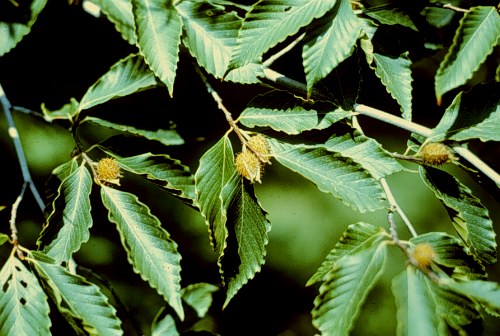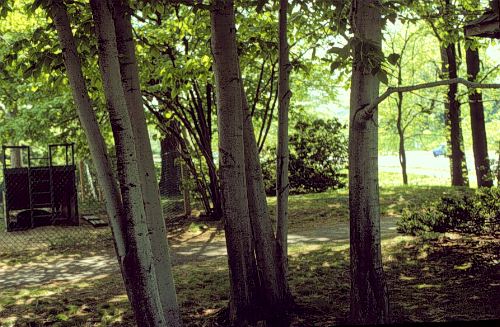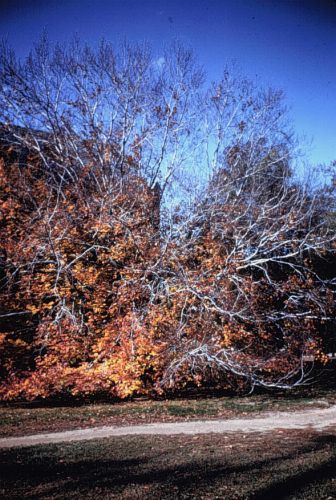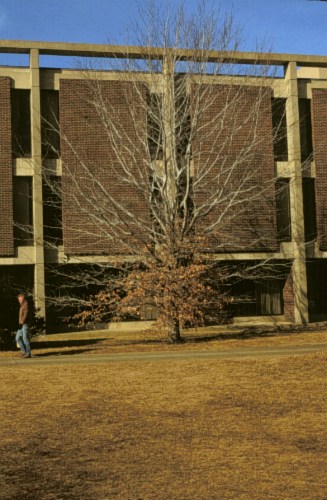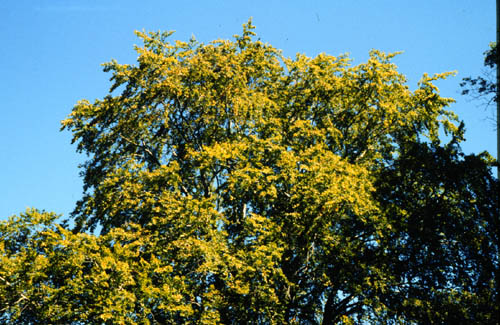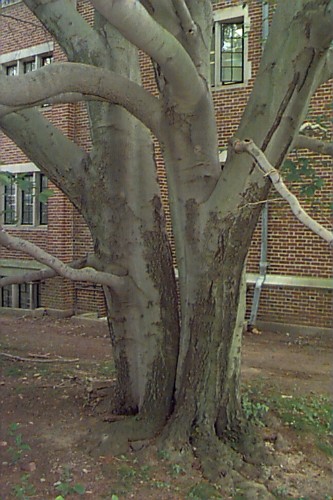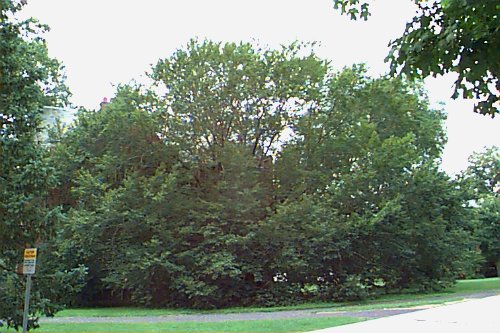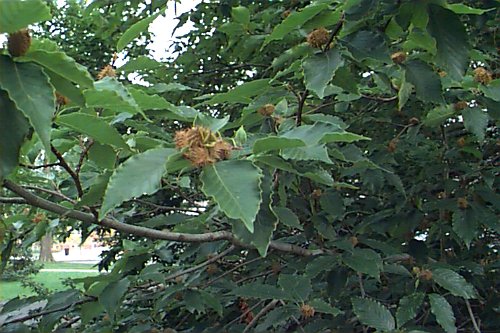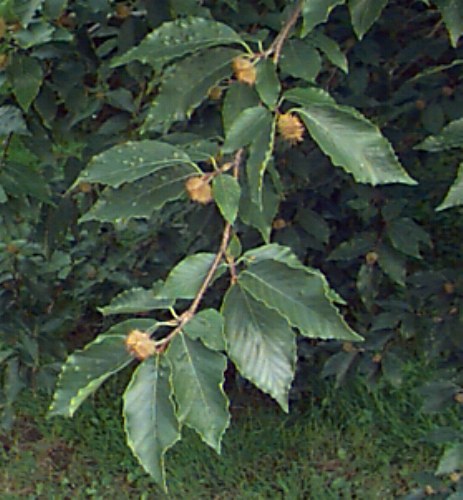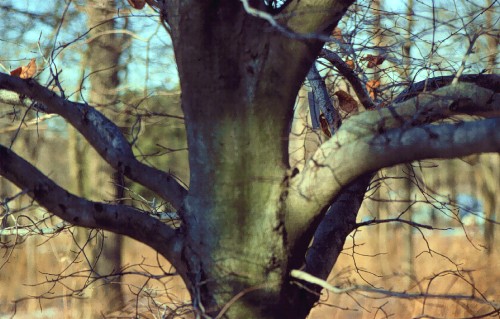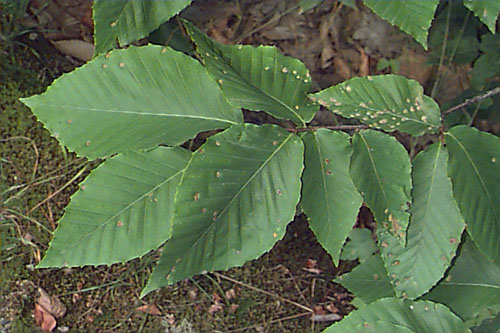Fagus grandifolia
American Beech
Fagaceae
ExpandHabitat
- native to eastern North America, from New Brunswick to Florida
- zone 4
Habit and Form
- a wide-spreading, deciduous tree
- trunk is short and branches generally touch ground
- 50' to 70' tall and up to 120' wide
- if tree is in crowded conditions, tree will assume a more upright habit
- slow growth rate
- medium texture
Summer Foliage
- alternate leaf arrangement
- simple, serrate leaves
- glossy dark green leaf above & light green below
- leaves are glabrous on underside with tufts of hair in the axils of the veins & along midrib
- 11 - 15 vein pairs
Autumn Foliage
- fall color is bronze
- very attractive
- leaves tend to persist through winter
Flowers
- monoecious
- usually flowers in April or Early May
- not ornamentally important
Fruit
- three-winged nut
- nut is enclosed in a spiky involucre
- spikes are recurved
- found singly or in 2 & 3's
- edible
- persist into winter
Bark
- light gray bark
- smooth
- wrinkled appearance to bark
Culture
- transplant during dormant season
- moist, well-drained, acidic soil
- does not like excessively wet soils
- full sun best
- shallow, wide root system
- prune in early summer or early fall
Landscape Use
- naturalized areas
- large open spaces
- lawn tree
- parks
- golf courses
Liabilities
- branches generally touch ground
- grass tends not to grow under tree
- does not like wet soils
- tends to sucker
- fruit can be a litter problem
- few minor pest problems including: powdery mildew, aphids, canker, and beech bark disease
ID Features
- serrated leaf margins
- smooth, gray wrinkled bark
- dead leaves persist on tree through winter
- tree is very wide and branches generally touch ground
- alternate leaf arrangement
- three-winged fruit with a spiky involucre
Propagation
- by seed
Cultivars/Varieties
- none

